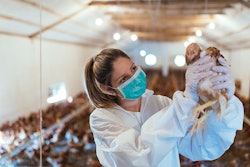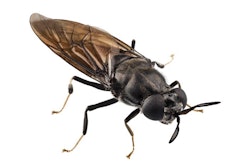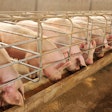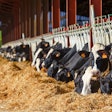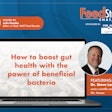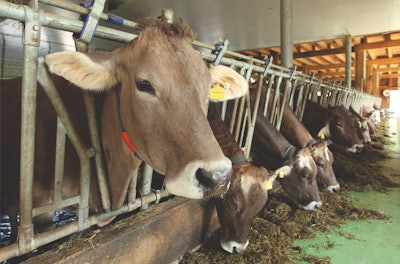
Fiber is a critical component of ruminant diets and offers numerous health and productivity benefits.
Forages can account for a small proportion or up to 100% of ruminant rations. With the exception of some grasses, they’re generally characterized by high fiber and lower energy value compared with other carbohydrate sources, such as cereals.
The fiber within forage is fundamental to rumen and subsequent animal, health and productivity, and its benefits go beyond simply providing energy for rumen microbes. However, numerous factors affect the utilization of fiber. So, with added pressure over land use, maximizing energy from forage, i.e. the non-human edible portion of animal feed, is becoming increasingly important.
Benefits of fiber
Fiber, or structural carbohydrate, is generally understood to include the rumen-digestible portions, cellulose and hemicellulose, and the rumen indigestible portion, lignin. Coupled with lignin, hydroxycinnamic acids can hinder complete digestion of forage.
Fiber offers numerous benefits to the animal. Structural carbohydrates stimulate chewing and salivation. The physical aspect of chewing helps to dissolve cell contents, increase the specific gravity of feed particles and stimulate saliva production. Fibrous feeds require more chewing to break them down into a bolus of a suitable size for swallowing thus high-fiber diets generate more saliva than those lower in fiber.
Saliva is a crucial buffer against ruminal acid production and subsequent pH reduction. Production can be over 100 liters/day. Because saliva buffers the rumen contents, it reduces acidosis and helps to achieve an optimum pH and ratio of volatile fatty acids. Structural carbohydrates create a fibrous layer in the rumen (rumen mat), which is important for frequent and strong rumen contractions aiding gut motility and digestion of solid feed particles.
Fiber also plays a role in regulating feed intake, and there is a close association between intake and digestibility in forage-based diets. Fiber is generally retained in the rumen longer than other feed components and variation in NDF digestion kinetics can influence the filling effect of feeds over time. The slow digestibility of fibrous feeds is considered the primary component affecting rumen fill.
Role of volatile fatty acids
The primary energy source for ruminant animals is volatile fatty acids (VFAs). Acetate, propionate and butyrate are the VFAs generated from digestion of carbohydrates with acetate and butyrate resulting from digestion of fibrous carbohydrates. These two VFAs are lipogenic and acetate is a milk fat precursor, thus low-fiber diets can often result in butterfat reductions.
It is possible to manipulate the diet to influence the molar ration of the three VFAs and subsequent nutrient accretion. High-fiber, forage diets encourage the growth of acetate-producing bacterial species resulting in a typical molar proportions of 70:20:10 acetate:propionate:butyrate.
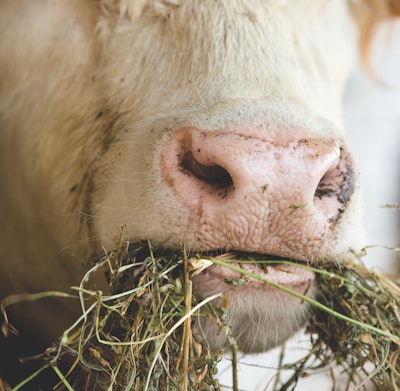 Fiber is a critical component of ruminant diets; however, energy derived from fiber can be sub-optimal. (Jevtic | iStock.com)
Fiber is a critical component of ruminant diets; however, energy derived from fiber can be sub-optimal. (Jevtic | iStock.com)Factors affecting fiber utilization
The challenge of using more forage while maintaining the same nutrient density is common. Having more forage in the diet is beneficial for rumen function, but the fiber fraction still has to be fermented in the rumen so that its nutritive value benefits the cow.
One of the most variable factors in forage is fiber digestibility that can vary between 30% for very poor-quality forages up to 85% for the better ones. These variations are linked to forage maturity, plant tissue type and chemical composition of the cell wall. Nutritional models attempt to account for this variability by using the parameters neutral- and acid-detergent fiber (NDF and ADF, respectively), as well as acid detergent lignin (ADL).
Lignin is not able to be broken down under rumen conditions and interaction with other cell wall carbohydrates, such as cellulose and hemicellulose, reduces fiber digestion. Other factors affecting fiber digestion, include the availability to microbes of other nutrients (nitrogen, sulfur) and soluble carbohydrates.
Fiber degradation
Degradation of fiber can be impaired by dietary excess of soluble carbohydrates, such as starch. Three potential mechanisms are often cited for this effect: 1) preferential use of the soluble carbohydrate; 2) decrease in pH as a result of rapid fermentation of soluble carbohydrates; 3) shift in rumen microflora to favoring those that digest soluble carbohydrates.
Level and type of dietary fat supplementation also affect ruminal fiber digestion with an inhibitory effect on microbial activity. It is well-established that long-chain polyunsaturated fatty acids (PUFA) are toxic to rumen microbes and are thus biohydrogenated to more benign saturated fats with a variety of intermediates also generated.
Fiber degradation can be severely restricted above certain levels of dietary fat. As mentioned previously, fibrous feeds affect rumen fill and are retained in the rumen longer than their rapidly fermentable counterparts. This longer ruminal residence is required to give microbes time to digest the cell wall material, and fiber digestion can be impaired by anything that affects rumen transit time. For example, higher feeding rates leading to increased DMI tend to result in reduced ruminal residence time and can negatively impact ruminal fiber digestion.
Increasing forage fiber utilization
Fiber represents energy in ruminant rations, but that energy is locked in the cell wall fractions of forage feeds. In order to maximize productivity and sustainability, techniques must be employed to help maximize the energy from fiber.
Numerous strategies can be employed to increase forage fiber digestion. Mechanical processing, such as chopping and shredding, is an important part of forage production due to the effect various methods have on the particle size and distribution of forage in ruminant diets. There has long been the debate over what is the optimal chop length and how to maintain physically effective NDF (peNDF), but it is well-established that chop length has an influential role in particle size and distribution in rations, such as a total mixed ration (TMR). Shredlage has received much attention lately with some conflicting results in terms of digestibility and certainly requires further research.
Pelleting and steam treatment, as well as cutting time, are ways to potentially influence fiber utilization. Pelleting affects particle size but may also affect rumen retention time resulting in reduced digestibility. Similarly, steam treatment of certain forages may be able to enhance the nutritive value of forages and feedstuffs, but further research is needed. Genetic improvement, including brown midrib mutants, reduced lignin varieties and high-sugar forages, could also be used to try to maximize energy from forage. There is a potential issue with any genetically modified plants in some markets, particularly Europe. Treatment with both acid and alkali is already established, but both have drawbacks, with particular reference to environmental, cost and safety issues.
Organic techniques include enzymes, bacterial silage inoculants and use of yeast additives. Enzymes, such as phytase, are more commonplace in non-ruminant diets but less so in the ruminant sector. Beneficial effects have been seen with dietary addition of exogenous enzymes, but results have been inconsistent and are likely to restrict greater adoption of this method.
Balanced rations
Ensuring a balanced ration in terms of energy and protein will also aid forage fiber utilization. Synchrony between energy and protein stimulates microbial growth and activity, which, in turn, should increase fiber digestion. Fiber-digesting microbes require a nitrogen source, predominantly in the form of ammonia. However, without sufficient energy to be able to utilize this nitrogen source, microbes are unable to generate microbial protein and proliferate, and fiber digestion can be compromised.
Ultimately, environmental and economic pressures will only increase for ruminant livestock production. Fiber is a critical component of ruminant diets and offers benefits in terms of land use in certain areas. However, energy derived from fiber can be sub-optimal, so any applications that increase utilization from fiber should increase sustainability in an increasingly volatile market.
References available upon request.


